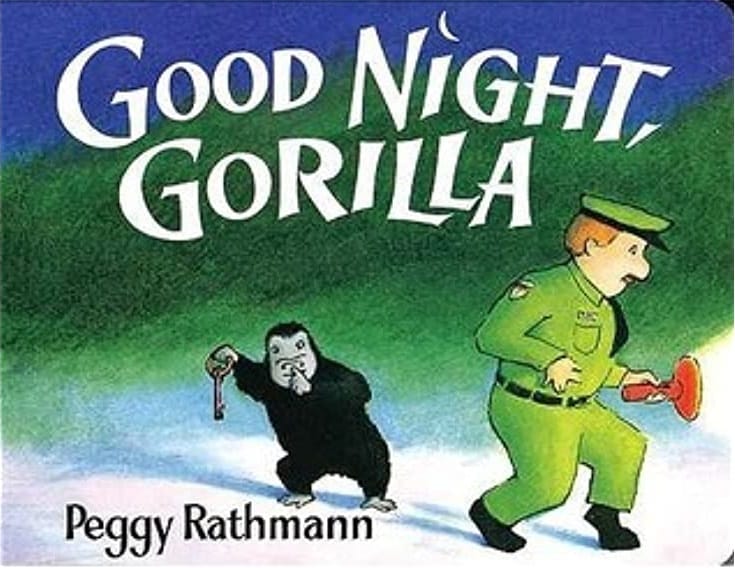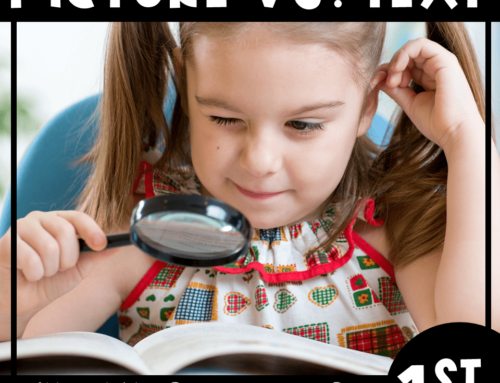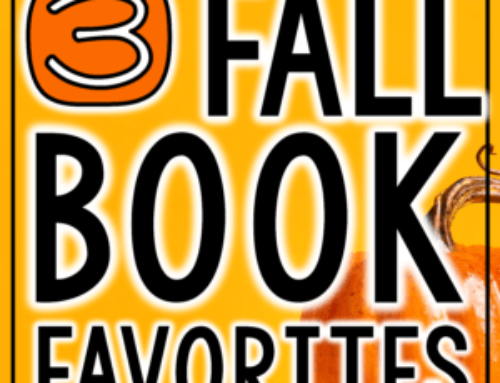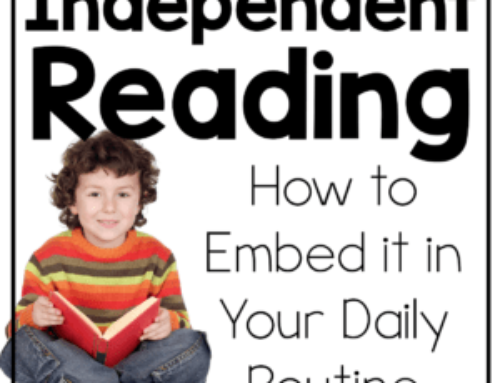We just finished up teaching the story elements and it made me realize that even though I absolutely, positively LOVE, LOVE, LOVE children’s literature I struggled to find books to teach this simple concept. I wanted to select books that increase in complexity.
Soooo, I started to dig in my piles and here is what I came up with! Over the years, I have found that wordless- or NEARLY wordless books are perfect when introducing new concepts. Since children have been looking at pictures and illustrations before they can read (and it is often taught as one of the earliest reading strategies), they are very in tune to pictures.
What Common Core Standards are Addressed?
This will cover quite a few standards and both first and second grade!
CCSS.ELA-LITERACY.RL.1.2- Retell stories, including key details, and demonstrate understanding of their central message or lesson.
CCSS.ELA-LITERACY.RL.1.3- Describe characters, settings, and major events in a story, using key details.
CCSS.ELA-LITERACY.RL.2.5- Describe the overall structure of a story, including describing how the beginning introduces the story and the ending concludes the action.
*Please note that all these links are Amazon affiliate links. I may earn a small commission at no extra charge to you! It helps to keep this little blog going!
Introducing Characters and Setting:
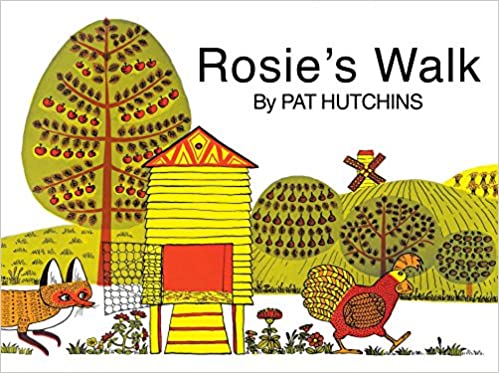 Rosie’s Walk by Pat Hutchins This book is an old favorite about a hen that goes for a walk. She is followed by a sneaky fox. Rosie leads him (without knowing!) on a wild chase before she safety returns home.
Rosie’s Walk by Pat Hutchins This book is an old favorite about a hen that goes for a walk. She is followed by a sneaky fox. Rosie leads him (without knowing!) on a wild chase before she safety returns home.
Why This Book is Great for Introducing Character and Setting
Students can use the illustrations to determine character and setting. There are only two characters (Rosie the hen and the fox). I really liked that this book has a setting of “outside,” but we can use it as a vehicle to be more specific about WHERE outside: by the pond, the hen house, the yard, etc. As a general rule, I taught my second graders that character and setting were usually introduced in the beginning of the story.
Expanding on Character and Setting
Goodnight Gorilla by Peggy Rathmann is an adorable picture book about a zookeeper that says goodnight to all of his animals for the night, until a sneaky gorilla steals his keys and lets all the animals out of their cages!
Why This Book is Great for Expanding on Character and Setting
I liked this book because it shows that characters can be humans (the zookeeper and his wife) OR animals (the gorilla and all the others). I also liked that this introduces setting as a TIME (night) and that setting can change in a text (from the zoo and cages to the zoo keeper’s house and back!).
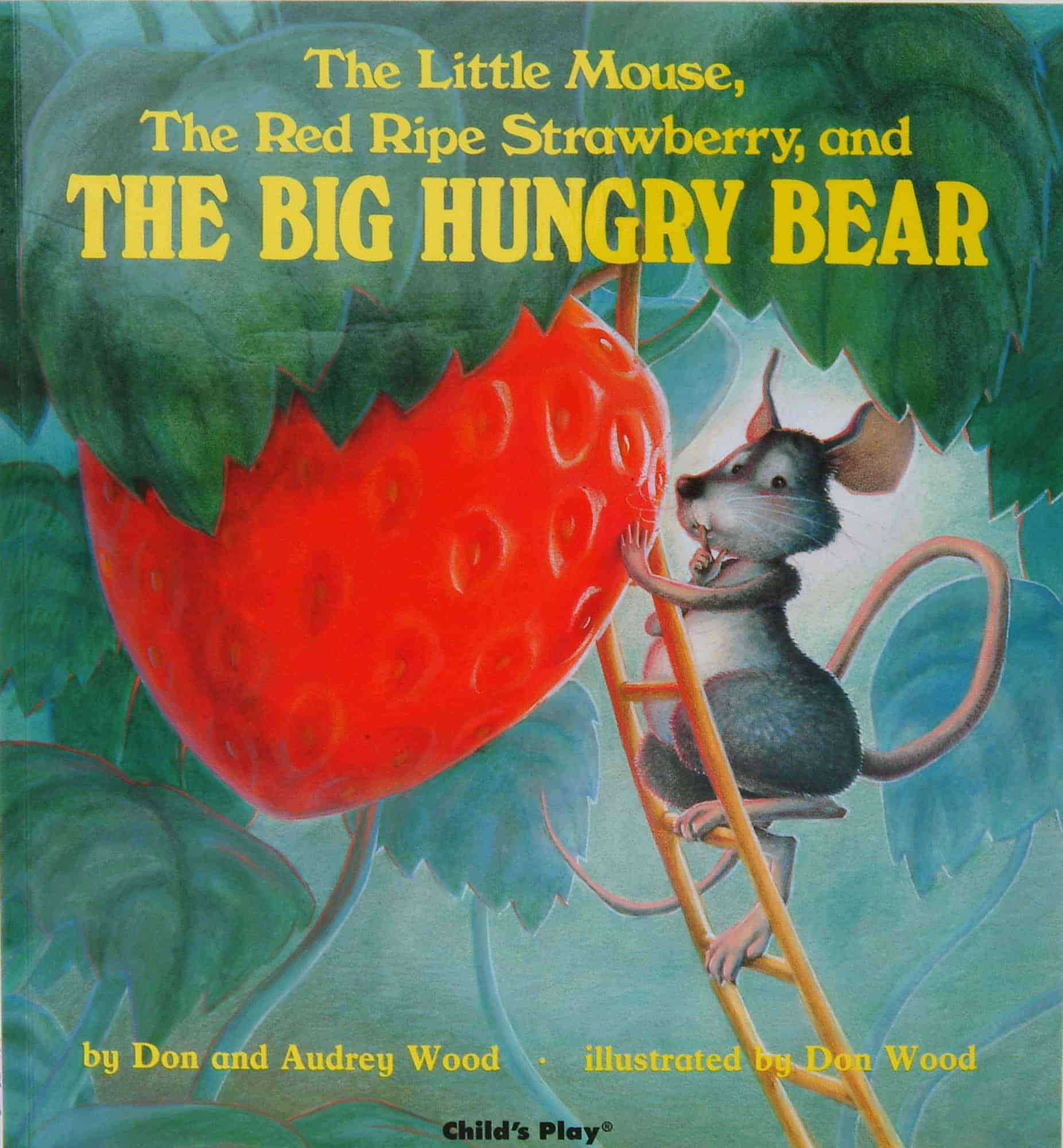 Introducing Problem and Solution
Introducing Problem and Solution
The Little Mouse and the Red Ripe Strawberry and the Big Hungry Bear- by Don and Audrey Wood is a sweet story in which the narrator talks to the only character in the book, the mouse. The narrator warns that a big hungry bear will want to eat the strawberry. The mouse tries several steps to solve the problem until it shares the strawberry with the narrator.
Why This Book is Great for Introducing Problem and Solution
This book has relatively simple text with really engaging illustrations. There is only one problem and it is introduced quickly and the entire book is about solving the problem. I liked the idea that the solution is clear to children. I also liked the idea that can be embedded easily is that events can steps that are taken to solve the problem (guarding the strawberry, hiding it, etc.). I taught my second graders that character, setting, and problem (especially in this book!) were usually introduced in the beginning of the story. The solution could usually be found at the end of the book.
Introducing Events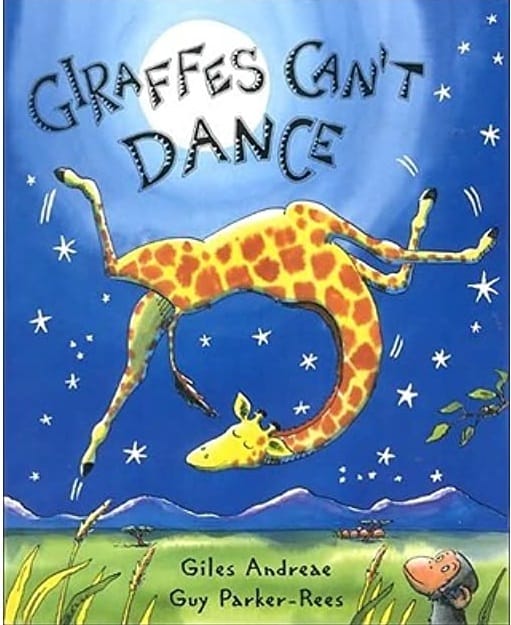
Giraffes Can’t Dance- by Giles Andreae is an empowering story about a giraffe that is sad because he is clumsy and unable to dance. He comes across a cricket that encourages him to listen to the world around him and let loose. He discovers that he can dance after all.
Why This Book is Great for Introducing Events
This books is a bit more of a complex story line, but very relatable to children. Most children can think of a time when someone has hurt their feelings! I liked this because the problem is clear (and even in the title) and the solution is clear. The events, or steps, he took to solve it were very simple- he went to the forest to be sad, met the cricket, and began listen to “a different song!” I taught my second graders that events of the story, or steps the characters took to solve the problem, or MEAT of the story, usually took place in the beginning of the story.
 Putting in all Together (Chracter, Setting, Problem, Events)
Putting in all Together (Chracter, Setting, Problem, Events)
Owen by Kevin Henkes is a classic book about Owen, who refuses to get rid of his beloved blanket. His parents take all kinds of steps to help him get rid of the blanket. Finally, they come up with a creative solution that makes EVERYONE happy.
Why This Book is Putting It All Together
I just love this story! I will admit that I am a bit biased. I think it is relatable to kids and has adorable illustrations. It also is a great introduction to Henkes “Mouse World.” It is one of the more intricate stories with longer text than any of the books above. I like it because the problem and solution are very clear. The events are step by step. It has several characters, but all are relatable (Owen, his parents and a neighbor) and multiple settings, but kids can summarize them as Owen’s house and yard. For second graders, it has a clear beginning (character, setting, problem), middle (events as steps to solve the problem), and end (solution).
What would you add? Do you have any books that are perfect for teaching story elements?
Mandy Gregory is a 2007 and 2012 Teacher of the Year. She has taught Kindergarten- 4th grades in both the general education and inclusion settings. She is currently a 1st grade Special Education teacher. She is the owner and creator of Mandy’s Tips for Teachers website (www.mandystipsforteachers.com) and has over 13 years of teaching experience. She is married with two beautiful children.


